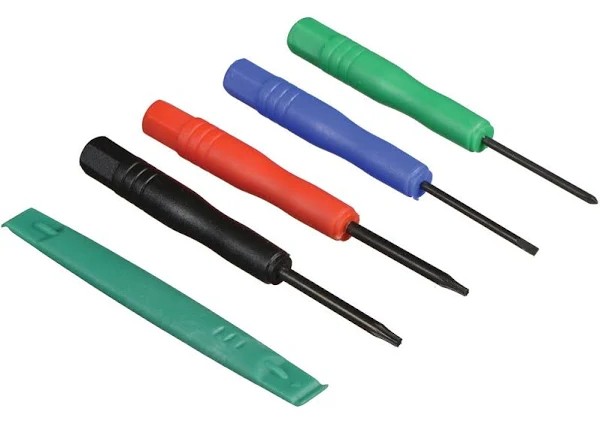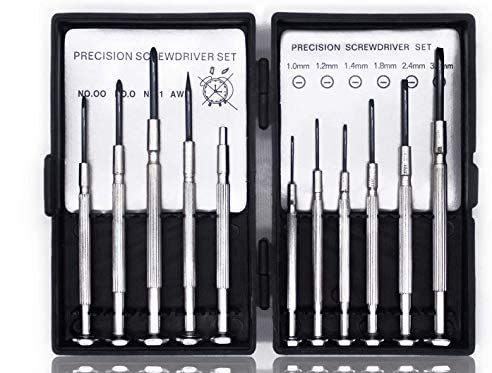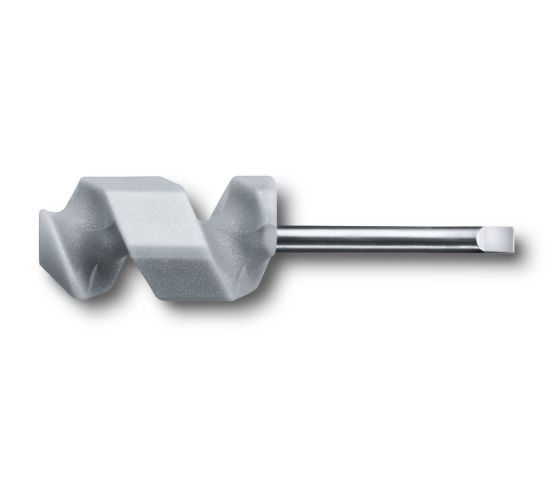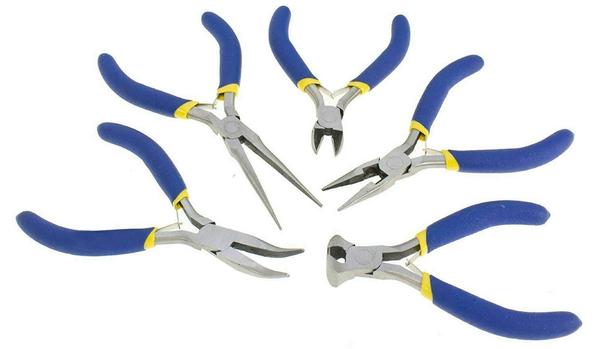Today I would like to throw out some ideas about minimalism.
This is more a collection of thoughts and ideas rather than a coherent article. I hope some of it will be of use or interest to you.

My blogs have touched on this or related topics several times already.
Creating a capsule wardrobe in neutral and natural colours is an example of minimalism.
My friend Sam had the concept of “Sam’s Van”: that one should not have more than could be moved in a single vanload, an example of quantity-limited minimalism.
In all honesty, I cannot call myself a minimalist. My girlfriend is probably having a hearty laugh at the very notion!
I have, however, attempted to make use of some of its techniques.
Don’t Count!
A very useful piece of advice I came across was “Don’t Count!”
“I only own n number of things” makes for a great blog title, but if many of us try to apply this in practice it can lead to unhealthy obsessiveness, or goal-post shifting.
Well done to those who have reduced their belongings to just n-items, but bear in mind a more productive application of the exercise is to reduce your belongings to only the things you need, rather than an arbitrary number.
Some possessions naturally begat others. I have knives and other edged tools for my kitchen, hobbies, toolbox, camping and EDC. It would be very foolish for me not to own at least one other possession to keep them sharp, for example.
Sometimes a simple single addition may make a lot of difference.
I carry my keys on a carabiner. Not all of my trousers have loops in the best position for this.
I brought myself a robust key-hanger that fits on my belt. The hanger even has a couple of stout press-studs so I am able to place it on my belt without needing to unthread it. Now the keys always hang directly over the pocket. An additional possession well worth having.
Clear the Decks
Another good tip I have encountered is to “clear the decks”.
Ideally, nothing should be on your floor except your furniture.
Once you have relocated or discarded the stuff that was taking up your floor-space, move on to the other horizontal surfaces and declutter them.
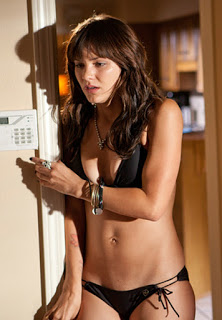
Minimalism for Preppers
Applying minimalist techniques can be a very useful exercise, especially for preppers.
You can apply them just to your backpacking or bug-out outfit, or to your life in general.
I come across a lot of lists of equipment. Many of the “essentials” are actually only conveniences or “nice to haves”.
I have read a minimalist list where the person owned one bowl, one plate, one mug and one glass. Presumably their mates never came around for a cuppa or a drink. Or perhaps their mates were all minimalists too and were expected to bring their own cups!
The same list included a set of measuring cups for cooking. Perhaps a single measuring jug is more minimalist than a set of cups? Perhaps they could drink out of the measuring jug! I was rather pleased to see someone offering a graduated drinking glass!
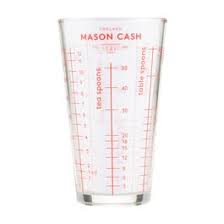
Kitchenware
If you are on the move, your minimalist cooking kit is a spork and canteen cup or mess tin. Many canteen cups now have non-stick coating, so use a non-metallic spork.
For a more leisurely camping kit, have a frying-pan, pair of billies, spork, spatula and a piece of plastic flexible cutting board. The latter is cut to size and shape to fit in your frying-pan. This is not a bad basis for your minimalist home kitchen.
Stephane Reynaud wrote a cookbook called “One Knife, One Pot, One Dish”. Not as minimalist as some would want, since the “pot” in different recipes may be a casserole, frying-pan, saucepan, baking dish, bain-marie or even a food processor.
If you want a very minimalist cooking outfit for home, a frying pan/skillet and a flameproof casserole is not a bad option.
Since you will be spending less money on kitchenware overall, you can probably afford quality examples of what you do select.
The casserole should be of the sort that you can use on either the hob or in the oven. If you use a halogen oven, you will obviously need a casserole that can fit inside of it and when filled is not too heavy for you to lift out.
An oven-baking dish is a useful supplement to the casserole. If you have a halogen oven, make sure your dish is of a size and shape that fits it. Most halogen ovens include a suitable baking dish with their accessories.
Select a spatula that can serve as a turner, server and a stirrer.
I like to cook and get a little creative in the kitchen, so I do not think it is too great a disaster if I have a couple of extra pots and spatulas.
A small saucepan will probably see lots of use. You will probably find you do not need more than two or three of varying size. Two frying pans of different sizes is sometimes convenient, although I use my wok and frying pans a lot less since I got the halogen oven.
If you do use a halogen oven, you will know that tongs are pretty useful for removing or turning hot food. You could use a pair of spatulas, I guess, but chances are your halogen oven came with a set of tongs, so why not keep these?.
You will need a chopping board and/or a set of flexible cutting board sheets for use with your knife.
I would opt for a Chinese cleaver, but you may then need a small knife for those rare jobs the cleaver is not good for. You should also have a serrated knife for cutting bread and fruit.
It is useful to have scissors and a spare penknife in the kitchen. Then again, my kitchen also has a buck-axe and Mora-knife!

I quite like the sets of measuring cups and spoons I have hanging up in the kitchen. I try to use them to stop over-serving myself portions. The minimum is probably a measuring jug.
Have at least one mixing bowl. Perhaps invest in an ovenproof one that may be used in the microwave or halogen oven.
Usually I drain food using the pot lid. A sieve, strainer or colander may sometimes be needed. The perforated steamer and mesh dishes from my halogen oven may substitute.
I could probably use a larger selection of storage boxes for the fridge, and make the ones I have more accessible.
For each person, there should be a bowl, plate, mug and drinking glass.
If you are a big tea drinker, you will want your mug made from glass. A glass mug is a good all-rounder for all kinds of hot or cold drinks.
For cold drinks you may want something taller with more volume and room for ice.
Ideally, have two sets of tableware for each person. You will need to wash-up less frequently and you can accommodate guests. If there are more than two of you, the extra plates and bowls are useful for serving. Bowls also get used for mixing, marinating and microwaving.
For each person, a set of utensils: knife, fork, spoon. All-metal, single-piece sets are more durable. The knife should be of a form that can cut cooked food and spread butter. Have a couple of spare sets for guests.
You may want a steak/cutting knife and teaspoon for each person or guest too. Personally, I like to have at least half a dozen additional teaspoons. A teaspoon is far better for spreading jam or marmalade than a knife, incidentally.
Adopt my methods of quick, economical washing-up and you will find it easy to maintain a stock of clean cutlery and dishes.
I have a dish-drying cloth, but seldom use it since letting washing-up drain and air-dry is cleaner and more convenient. It gets used more often to swat flies. Drying my hands is more common, and this only needs a small hand-towel. Same hand-towel is useful for handling hot dishes and pots.
What Do You Really Need?
It is foolish to think what applies to yourself is true for everyone else. That is quite a useful thing to remember in everyday life. Keep this in mind when you read minimalist lists.
Sometimes I find that I do not need some of the items on minimalist’s lists. Having a good penknife does away with the need for many other implements.
My girlfriend recently tidied-up a bedroom that had been used for storage.
“Transformed” is probably a better term. It was hard to believe it was the same room!
I was looking around for a rug with a two-metre high pile of junk swept under it.
One of the few items she declared surplus to requirements was a desk-lamp. She had absolutely no use for this, she declared. Neither had I, I realized.

I have two desk-lamps, both fitted with daylight bulbs. I only ever use them when I am photographing something.
I mention this, since several minimalist lists of belongings include desk-lamps or floor-lamps as essentials. Perhaps their home is considerably darker than mine and they do actually need them.
Most of us do our writing and reading on computers these days, so I would venture that many of us do not need a separate desk-lamp. I certainly do not need a lamp to “create mood”.
Sometime ago I got rid of a freestanding lamp since I never used it.
I think television shows create a false impression here. Often on the box, we see an interior with multiple lamps, all of them lit in the middle of the day!
Don’t use lights you do not need, and reduce your energy bill. Sell or donate lamps you never use.
Another item that is surprisingly common on minimalist lists of “necessities” is bathroom scales. Personally, I have never owned a set of bathroom scales. I do not need a set to tell me I am carrying extra weight, I can see it! Similarly, weight-loss that the scale claims has no value. What matters is that which I and others perceive.
Wastebaskets? I have certain in-laws that cannot grasp not to use a bin without a liner. My rubbish for recycling goes into a repurposed plastic bag. This usually hangs from one corner of a kitchen chair, so I need no bin.
Foodstuff that might attract flies goes into a bag in the freezer until it is thrown out into the bins outside.
Not that I get many flies, since I fitted all the windows I might open for ventilation with insect mesh! Simple addition: big change!
Something I don’t see on many lists is a dressing gown. I spend most of my time at home wearing little else! One of the pleasures of a nice shower is drying off in a snuggly dressing gown!
My older dressing gown has fallen to bits, so I may replace it with a longer, hooded fleece gown for the colder months, and to wear when the other fleece gown is being washed.
The dressing gown is supplemented by a fleece blanket in the lounge. I spend most of my time alone, so heating the whole house if it is a little chilly is stupid. I often watch television or play video games with a blanket thrown over me. If it gets colder, I throw a poncho-liner over this too.
Constructive Minimalism
In an apparent paradox, if I have been reading a minimal list of belongings, it is more usual for me to think about buying something rather than discarding something.
This illustrates how minimalist lists can be a useful tool for making you concentrate on what are your essentials and highlighting where you might make improvements.
I have, however, taken to practicing a self-imposed “cool-down” period. I wait at least 24 hours before I click “buy”. I may miss the occasional bargain, but generally I save more money by avoiding spending it on stuff I can manage without.
Thinking of your possessions as “collections” or “kits” can be productive in rationalizing what you have.
Bedding
Considering bedding, it occurred to me my life would be a lot easier if I had two brand-new sets of sheets and duvet covers. Some of my older stuff did not quite fit the mattress I now have.
Two sets give me one new set on the bed while the other is in the wash.
I have an extra duvet and pillow, so I can use my older stuff for these, again giving a set in use and one in the wash.
Stationery
If I consider the topic of “stationery”, what do I actually need, compared to what I have?
Most writing is now done on the computer, so pens and paper are seldom used.
I have blank A4 paper for the printer (although the printer seldom behaves well enough to print anything! The device is mainly used for scanning.). That blank A4 paper can be used for various other things. A pad of lined paper and/or a notepad or two. Pad of post-it notes. Stick of paper glue.
You may have uses for a highlighter, stapler or some paper-clips.
Seldom do I need envelopes these days. If I do need one, I can fold a piece of paper into one. I do occasionally send packages, so some tape is useful.
I have plenty of knives, so I could do without a pencil sharpener, although there is little point in discarding the couple that I have.
I have some super glue and blu tac, although these reside in my modelling supplies.
Erasers, pens, pencils, of course.
Go through your pens and discard refills or disposable pens that no longer work.
Some forms require you to fill them in in black ink, so make sure that some of your pens are black.
Recently I had to send a parcel and was unable to find a thick pen to write the address with. So I bought a pair of black Sharpies, adding one to my EDC and keeping the other for home use.
Sometimes it is a matter of organization.
I had lots of pens and pencils, but distributed in various diverse locations. Pool most of your erasers, pencils and pens into a box or a large pencil case. You can still have a pen and/or pencil in places you are likely to need them, but if you do need something you only have to look in one place.
I have a pen and pencil in a box in the lounge, a pen and pencil in a kitchen drawer, and everything else in a large pencil case in my room. A handful of paper-clips form the zip-pull.
Ruler, protractor and a pair of compasses can be handy at times, and also serve in the “tools/DIY” category.
DIY Tools
The DIY tools I probably use the most are a tape measure and a drill. There are often screw-hooks that need putting up.
A awl, gimlet or bradawl is useful for beginning drill holes. The reamer on a penknife is good for many jobs, but the T-handle location means it is awkward in restricted spaces.
Many jobs I have used a drill for actually only need a gimlet. If just starting out, invest in a set of gimlets. Only buy or borrow a drill when you encounter a job that really needs one.
A penknife reamer makes a pilot hole large enough for the screw-section of a gimlet and reduces the chance of splitting the grain.
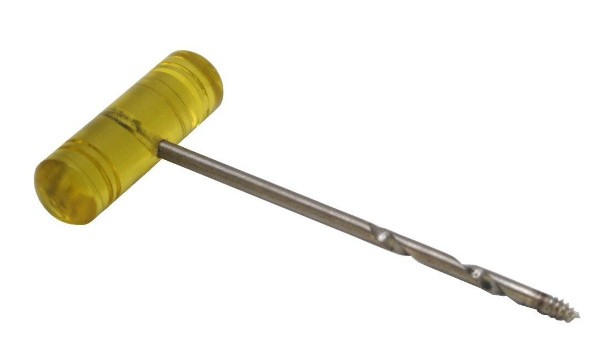
To start accurately drilling metal, a centrepunch and hammer is useful. A nail or scriber may substitute for a centrepunch for some applications.
On the back of my tool cupboard door hangs a tape measure, small spirit level, a Stanley knife and a hand-crank flashlight. The flashlight is mainly used for exploring the depths of the cupboard, but may be used for other household applications.
With the abundance of small electronic devices in modern life, a set of fine screwdrivers will prove useful. Add tweezers and magnet(s) as suggested. You may wish to add a spudger. One screwdriver should be large enough for rewiring plugs (3 mm slot). If this is not the case, buy a small electrician's screwdriver.
You will probably need some pliers. Needle-nose and chunky, possibly curved too. Your hobbies may require additional smaller examples.
Eastwood's character in “Grand Torino” opinions that all you really need is duct tape and mole grips. A related witticism “If it rattles and shouldn't, duct tape it. If it doesn't rattle and should, use WD40”.
Scan It and Toss It
As mentioned, my printer is also a scanner. It can feed-in and scan whole stacks of papers automatically. Or at least, it did until Epson discontinued the software needed to do this for my model!
A scanner may be very useful for decluttering your life.
When I moved in with my girlfriend, I scanned scores of folders of documents, magazine articles and old papers. This allowed me to throw out several sacks of the old papers and makes it easier to find the information I want when I want it.
Bag and Box
Bag or box stuff when you can. You will save yourself time if these bags and boxes are transparent or mesh.
For example, stick all of your pairs of gloves that are not in jacket pockets in a mesh bag in a drawer or on a wardrobe shelf. When you need gloves, just one place to look, and no hunting for a glove hiding in with the socks.
Things that are wanted but seldom used may be tucked away on a high shelf or bottom of a wardrobe. Conversely, some things that you might make more use of may currently be hidden out of sight and out of mind.
Put your teaspoons in a small jar on the countertop rather than hidden in the bottom of a crowded drawer. Makes them much easier to find.
My final advice is to understand that decluttering is likely to be a “work-in-progress”.
Many times you will think that you are nearly done, but are not! Changing one thing will put other things in a new context.
Scanning the last of my old papers got me thinking about the various plastic and card folders they had been in.
I have lots of books and DVDs. While I like to call the exercise “decluttering”, there is no way my home will ever look uncluttered.
It might be argued that much of my minimalism is “below the surface”.
There is now less in the cupboards and drawers. What is in there is now more logically organized and more easily found.
It is quite probable that no-one will notice the difference except myself.
Psychologically, the place feels calmer.

